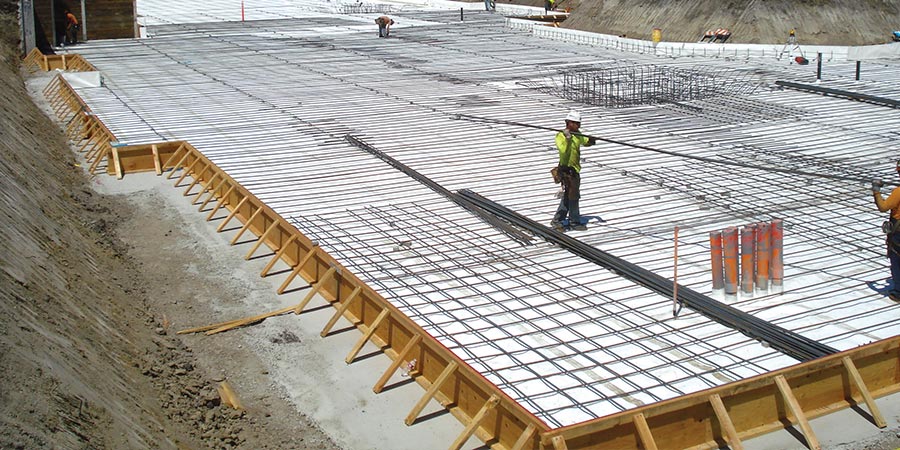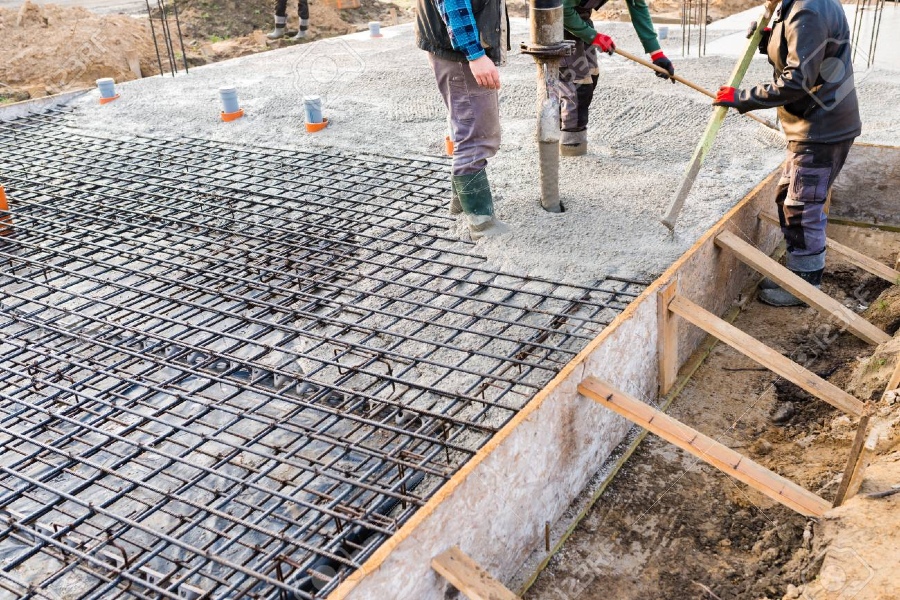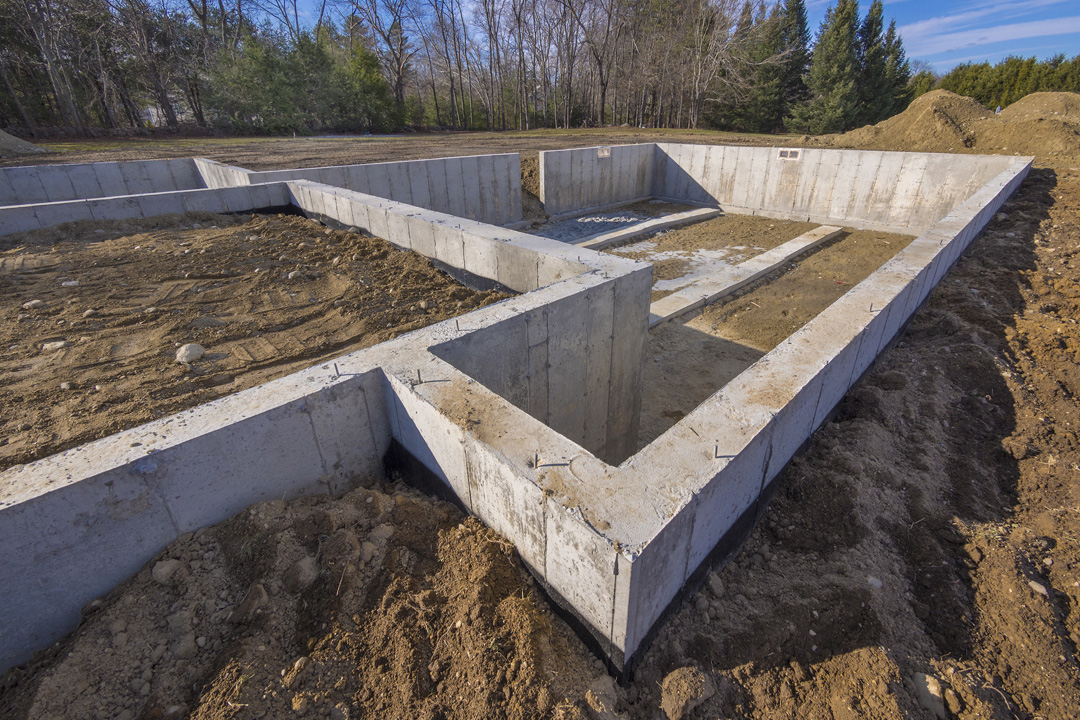What Are The 3 Types Of Foundations?
What Are The 3 Types Of Foundations?
By definition, the foundation of the home is the load-bearing portion of the structure , typically built below the ground.
At the very least, any foundation must do three things:
- Support the above structure
- Keep the groundwater out
- Acts as a barrier to water and soil vapor
Luckily, these choices are pretty straightforward, and their relative advantages and disadvantages are crystal clear. And while deciding what kind of foundation is right for your home isn’t the most exciting part of planning your building, it’s undoubtedly one of the most important (and early) steps.
Below are the three types of foundations that you are most likely to encounter in this market, starting with the cheapest slabs.
1. Slab Foundations
A slab is one of the most common types of foundation, requiring the least amount of lot ready to start building.Installation is simple compared to other types of foundation, making slab foundations popular among homeowners for their relatively low price tag.
Like all foundations, the slab begins with concrete footers poured 24 inches below the projected finishing grade. After the legs have been poured, at least two layers of concrete block are laid on top of the legs. After the blocks have been laid, all the internal pipes are installed. Then a rock filler is added , followed by four inches of concrete poured on top of it.
Advantages:
- Low Maintenance: Of all foundation types, slabs require a minimum amount of maintenance, adding value to their price.
- Price: In general, slab foundations are your cheapest option when it comes to foundations, an excellent choice if the budget is front-of-mind.
Drawbacks:
- Bad Weather: Slabs offer minimal protection for your home from storms and other inclement weather events.
- Potentially Expensive Repairs: Plumbing systems are buried BELOW on the slab, making repairs costly, as you will have to first break through the concrete slab to reach the pipe. However, with new technology, such as pex plumbing systems, increasingly used by builders, the eventual need for access below your slab is far less likely than in the past.
2. Basement Foundations
The basement, literally, is an eight-foot (or deeper) hole that ends in a concrete slab. For a long time, the basement walls have been built with cinder blocks. As a result, they have been prone to structural failures and leaks as they age.
Nowadays, and specifically at Reinbrecht Homes, all of them are constructed of poured concrete walls, which have virtually eliminated most of the structural integrity and moisture permeation problems. Basements are excellent for anchoring the property to the ground while extending the base below the frost line of the area, which helps to maintain the integrity of the foundation over time.
Advantages:
- Seasonal Living Space: great for smaller footprint homes, the addition of a finished basement creates energy-efficient living spaces that are well suited to changing seasons, warm in winter and cool in summer.
- Easy-Access for Repairs: It goes without saying that it’s easier (and cheaper) for technicians to repair your home utilities by standing up instead of crawling in a rack or digging in a slab.
- More, Cheap Square Footage: The most significant advantage to the basement foundation is the additional square footage — and at a much lower cost per square foot than other parts of the home. Storm Protection: For both you, the residents, as well as your home. Basements make great shelters from the worst mother nature can throw at you, while still providing a solid anchor for your home.
- Storm Protection: For both you, the residents, as well as your home. Basements make great shelters from the worst mother nature can throw at you, while still providing a solid anchor for your home.
Drawbacks:
- Lack of Natural Light: If you’re converting your basement into a living space, and it’s not a walkout, you might have to find creative ways of bringing some light into the space. Again, this isn’t an issue with walkout basements.
- Increased Cost: The basement is understandably the most expensive foundation-type of the three mentioned here-more so if you choose to finish that space. Even then, the finished square footage of the basement will most likely be the least expensive in your entire home.
- Potential Flooding: You may end up in a flooded basement without a pump. To combat (and virtually eliminate the threat of) flooding, we recommend battery backup, generators or water-flow backups. In all cases, though, the best scenario to prevent potential flooding is ensuring a natural path for drainage.
3. Crawlspace Foundations
Homes with a gateway foundation are raised a few feet from the ground. Like a slab, the base is poured, and then the blocks are laid to create the foundation to support the walls of the structure.
Building a gateway foundation will save cost compared to the basement, but not necessarily time, as it takes about as much time to build as a full basement foundation.
Advantages:
- Accessible Utilities: Resolving the biggest drawback of the slab, the gateway facilitates easier access to your home wiring, pipe and ductwork, making it easy to repair and upgrade in the future.
- Warmer Floors: In contrast to the slab foundation, the first floor of a house built on a crawl space doesn’t feel like it’s built on concrete. In fact, the floors tend to be warmer, because the crawling space is conditioned.
Drawbacks:
- Prone to moisture: even with the installation of state-of-the-art vapor barriers, it is still possible for crawling areas to support the growth of molds and fungi. For this reason, you ‘re going to want to keep an eye on your ramp. In the case of Reinbrecht Homes, our refurbished crawl spaces further help with humidity problems in the bay.
- Little Storm Protection: Like slab foundations, crawl spaces offer little-to-no protection from inclement weather to the structure of your home.



Are You Looking for a Concrete Foundation Specialist You Can Trust?
Spaulding Concrete has been laying concrete foundations throughout the San Francisco Bay Area for over thirty years. We have poured hundreds upon hundreds of foundations for homes, commercial and agricultural properties over the years. The more difficult a project is, the harder we work to provide real solutions and state-of-the-art solutions. We partner with each client from concept to completion, which enables us to design and implement plans that meet or exceed our client’s goals. Our concrete design team is made up of highly skilled, experienced estimators and craftsmen who work diligently to minimize problems and ensure that we remain on schedule. With all the resources available to complete your project through strong connections with leading suppliers, we are a single source for any type of concrete foundations. For all our products and services, we use the latest industry technologies so you can ensure your project will be completed on-time and under code. When it’s time to finish and place, you can count on our highly experienced crews who are skilled in all facets of the industry. Spaulding Concrete will deliver if you need experience with any type of structural concrete. To schedule your free quote, call or contact us today! We are proud to serve Orinda, Lafayette, Moraga, Pleasant Hill, Concord, Martinez, Pittsburg, Antioch, Brentwood and the surrounding areas.
